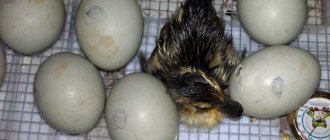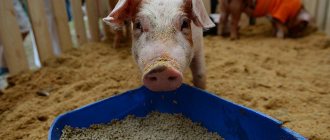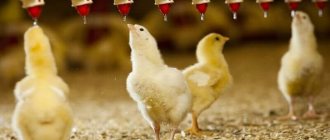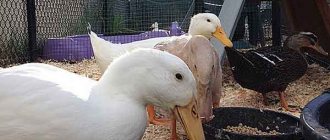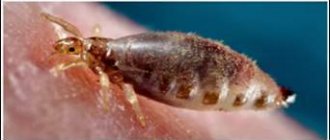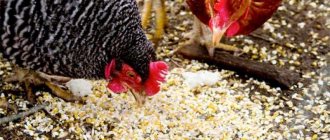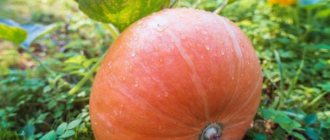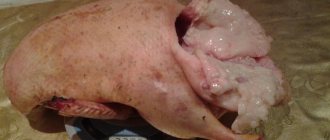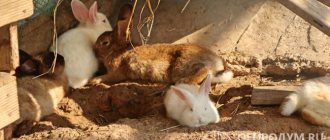2 460
3 comments
4
Author:
Kiva Anatoly.
Reading time: 22 minutes
Since March 2022, the company has been producing an updated line of feed for broilers Purina® Profi. It is intended for full feeding of poultry in personal and farm households. The complex includes three components - “Start”, “Growth” and “Finish”.
When developing an improved feed formulation, emphasis was placed on the following::
- prevention of intestinal diseases, especially coccidiosis;
- uniformity of livestock;
- reducing poultry mortality to a minimum;
- high final broiler weight;
- versatility;
- cost savings on purchasing vaccines and veterinary drugs;
- taste of meat.
Purina® PROFI food contains no growth hormones.
To solve these problems, the composition was introduced:
- butyrates, which maintain normal microflora in the intestines due to the normal growth of intestinal villi, and also strengthen the immunity of broilers;
- phytogenics - to stimulate appetite and maintain a healthy ratio of different bacteria;
- coccidiostat (monensin sodium) – to protect against coccidiosis;
- feed antibiotics (zinc bacitracin) – provide protection against enteritis.
Butyrates and phytogenics are included in all three feeds of the line, coccidiostats and feed antibiotics are included in “Start” and “Growth”.
Choosing the right feed for broiler chickens
To quickly gain weight in broilers, experts recommend using combined feeds.
It is preferable to use dry food mixtures that contain a lot of proteins. Proteins of plant origin are most abundant in corn, wheat and barley. Therefore, when choosing purchased feed, you need to pay attention to how much of this grain is in the feed
In order for chickens to have strong skeletal bones, they need calcium in their daily menu. This mineral strengthens young bones so that they can withstand growing muscle mass.
Currently, manufacturers of chicken feed offer many different types of feed for chickens from birth to slaughter.
Compound feed PK5-1 for broiler chickens
From the moment of birth, chicks are offered food PK5-1, which is a pre-start mixture for feeding chicks from birth to 14 days. This food contains corn and wheat; these components are ground into flour and served in the form of a mash. Whey or skim milk is added to it in a ratio of 1:10.
This food is intended for active building of muscles and bone tissue, as well as for the proper development of internal organs. This food is given to young animals every 120 minutes.
Compound feed PK5-2 for broiler chickens
From 15 to 30 days, young animals should be given feed PK5-2, which includes peas, barley, and protein components. Probiotics are also added to some types of such food. This mixture helps accelerate the growth of chicks and gain weight faster.
This mixture is available in granules or crushed. In order for the feed to be better processed in the stomachs of chickens, it is recommended to add small pebbles with a radius of no more than 1 mm to the feeder. During this period, young animals are fed no more than 6 times a day, night feeding is canceled.
Compound feed PK6 for broiler chickens
From a month to a month and a half, for feeding young animals you need to use the PK6 mixture, which is the finishing mixture for broiler chickens. The composition of this food includes: a lot of cake, soybean pulp, as well as minerals. The mixture is round granules that can be formed from crushed grains and from whole grains.
For breakfast, chickens are given this mixture in the form of a mash, and for lunch and dinner they are given dry food. During this period, young animals need to be fed no more than 4 times a day with a break for night sleep.
In addition to cereals and cake, the following components are added to the PC mixture:
- Beet molasses;
- soda;
- phosphate;
- sodium bicarbonate;
- sunflower oil;
- animal meal;
- yeast;
- starch;
- limestone flour.
These mixtures contain many different vitamins that improve metabolism and strengthen the immune system.
BR of compound feed for broiler chickens
In addition to mixtures for PC broiler chickens, you can use BR type feed. For example, BR1 is used at the 1st stage of life of chicks (until the end of the second week of life). But the BR2 mixture is used for the active growth of babies. Further, BR3 is the finishing compound feed.
The BR1 starter feed includes wheat and soybean meal. There is a small amount of barley and corn. To ensure that children's bones form correctly, equal parts of chalk, shells, monocalcium phosphate and table salt are added to them.
The food in this series for the growth of chicks contains 40% wheat and 24% soybeans, as well as some peas, barley, sunflower and soybean cake.
BR3 contains the following components in equal parts: soybean, soybean pulp and sunflower cake. Protein components – up to 54%, wheat – 24%, as well as a little peas and barley.
Such feed makes the life of farmers much easier - broilers are easier to feed and easier to maintain. However, when feeding chickens with such food, it is necessary to ensure that the birds always have a large amount of fresh, clean water, otherwise the chicks may develop problems with the digestive tract.
Drinking water should be boiled and cooled to room temperature. On the first day, newborn chicks are given only glucose; on the 3rd day Chiktonik should be added to the water. And once every 6-8 days, the young animals are given a weak solution of potassium permanganate.
Fattening stages
Manufacturers produce their own food for each period in the life of a bird. Depending on the age of the bird, the composition of the feed and the degree of its grinding vary.
PreStart
The stage of transition from embryonic digestion of the yolk to feed consumption. The chicken's digestive system undergoes major changes at this stage. The requirements for pre-start feed are the highest:
- use of easily digestible ingredients;
- high nutritional value of the feed, including levels of amino acids, vitamin E and zinc;
- use of prebiotics and probiotics;
- use of immune system stimulants;
- feed intake stimulants: physical structure, high sodium content, flavoring additives, etc.;
- fine grinding, homogeneity of the mixture.
Despite the high price of pre-start feed, its use has virtually no effect on the total cost of raising poultry. Firstly, this stage lasts no more than five days, and secondly, at this age one bird consumes quite a bit of food per day.
Start
The starter diet is used until the bird is at least 10 days old. If chickens do not gain weight well and by 10 days of life have not reached the standard live weight for a given cross, feeding with starter feed must be extended to 14 days, or until the standard values are reached.
The use of high-quality starter feed is the key to gaining the required weight in birds for slaughter. Such specialized food, containing an increased amount of protein and a reduced amount of fat, ensures that the bird has good health, strong immunity, and the development of a good appetite. Pelleted feed sizes:
- diameter 1.6-2.4 mm, length 1.5-3.0 mm;
- crushed – diameter 1.5-3.0 mm.
Fattening
After the starter diet, a growth diet is used. This stage lasts from two weeks to 20 days. The transition to a growth diet should not be abrupt. First add 20% of growth feed to the starter diet and gradually increase its share. The size of the granules and grinding of the feed increases: the diameter of the granules is from 2 to 4 mm, the length is from 4 to 8 mm; The diameter of the grain is 3-5 mm.
At the fattening stage, it is permissible to add no more than 15% of the total weight of feed to the poultry diet.
Finish ration
From the 25th day of life until slaughter, finishing feed is used. During this period of the bird’s life, active growth and weight gain occur. The finishing feed is formulated to avoid loss of muscle mass and excessive fat gain.
A broiler consumes finishing feed for most of its life, therefore, the cost of it makes up a significant part of the cost of keeping the bird. The share of whole grains in the finishing diet can be up to 20%.
- Stern
- Recipes
- Supplements
Compound feed pk-1
Description of food for egg breeds. Instructions for feeding laying hens Read
Compound feed pk-2 and pk-3
Mineral and vitamin compositions, feeding standards Read
Compound feed pk-4
Used to feed laying hens aged 15-17 weeks Read
Compound feed pk-5
Composition and instructions for feeding broiler chickens Read
Purina Pro
Important differences from the previous line, application patterns Start, Growth, Finish Read
Germination and steaming of barley and wheat for chickens: how to do it correctly and how to give it to laying hens
Wheat for broilers
Rules for feeding broiler chickens with wheat. Dosage for chickens from the second day of life and adult birds Read
Mash
Making mash for broilers at home Read
Rice and buckwheat
How and in what form you can use rice and buckwheat to feed chickens. Standards for adult birds and chickens Read
Bread
What kind of bread can you feed chickens and how to do it correctly Read
Fish
The product is given in limited quantities: overfeeding can cause serious harm to the bird Read
Chalk
Chalk as a food additive for chicken feed. Feeding standards for chickens, young animals and laying hens Read
Meat and bone meal
Meat and bone meal is a mandatory additive for feeding chickens, containing protein and fats of animal origin Read
Fish fat
How to give fish oil to chickens, layers and broilers. What are the benefits of the drug and are there any contraindications Read
Limestone
Limestone (dolomite) flour in the diet of chickens. Advantage over chalk and feed shell Read
Salt
Daily dosage of salt for adult birds and young animals and cases of unwanted use Read
Tips for choosing
In no case should the food contain mold, nor should it contain insects. To check for contamination, you need to sift 0.5 kg of the mixture through a sieve: if more than 20 insects are found, the entire package must be thrown away. Another sign of spoilage is the presence of an unpleasant odor. It is best to test it for a batch of food poured into a glass-covered porcelain container and immersed in boiling water for 5 minutes.
The humidity of the product should be no more than 15%. This indicator can be checked by drying the feed for two hours at a temperature of about 130°C. The moisture content will be equal to the difference in the masses of the original and dried products.
About the secrets of broiler poultry farms and feed, see the following video.
Storage conditions
The shelf life of Purina® Profi is 6 months. Food should be stored in a cool, dry place. It is important to prevent it from getting wet, otherwise it should absolutely not be used.
Soaked and dried food is spoiled. Its use can lead to loss of livestock.
How to properly organize a broiler business? Is this activity profitable and what needs to be taken into account?
Read
How to distinguish young broilers from regular chickens?
More details
Rating of the best broiler chickens - top 5 most productive birds for meat and meat and egg production
Look
Review of colored broiler crosses: high meat productivity and good egg production
Further
Raising broilers in cages is a quick way to gain live weight using a small amount of feed
Look
Purina: feeding pigs
The following types of diets are intended for pigs at different stages of rearing:
- Prestarter (from 1 to 46 days).
- Starter (from 46 to 80 days).
- Fattening (from 81 to 180 days).
Proper use of Purina brand food allows you to achieve a body weight gain of more than 110 kilograms in six months - this fact has been confirmed by farmers in different countries of the world.
Feeding pigs
Prestarter
In the first week of life, the piglet receives all the necessary components from its mother's milk. However, already on days 5-7, farmers begin to introduce complementary foods to the livestock. It is the Purina feed mixture that will allow the body of young animals to adapt to the intake of roughage. The diet contains lactose, which facilitates the absorption of nutrients.
It is important to provide animals with free access to water
Such nutrition allows you to protect the fragile body of young animals and saturate it with vitamins and minerals. The product contains the following components:
- antioxidants;
- vegetable fats;
- limestone flour;
- livestock products;
- probiotics.
Thanks to this feeding, piglets rarely suffer from colds. In addition, metabolic processes in the body of individuals are significantly improved.
Starter
This feed allows you to increase the body weight of piglets. However, the livestock should be transferred to this stage gradually to avoid a negative reaction from the body. Experienced farmers recommend mixing two types of feed at once - this will ensure normal metabolism.
Lactating pigs can also be given starter feed
Starter feed for pigs contains a large number of nutritional components, including:
- grain crops;
- sunflower cake;
- livestock products;
- processed limestone;
- vitamin-mineral premix;
- salt.
When feeding piglets with this feed, it is possible to achieve weight gain in each individual of about 30 kilograms in 2.5 months
To ensure maximum productivity, it is important to follow the feeding recommendations provided on the packaging.
Fattening
At this stage, animals gain the bulk of their body weight. The components included in the composition contribute to this process.
Feed allows you to protect livestock from various pathologies
The mixture is based on a large amount of proteins and amino acids, and the food also contains vitamin and mineral supplements that are beneficial for the animal’s body. Fattening livestock on this diet allows us to achieve high quality finished meat products. At the same time, the animals not only gain meat, but also the proportion of fat in the pig carcass is significantly reduced.
Purina Grower
From the age of two weeks, it is recommended to use Purina Grower broiler chicken feed. Farmers use this feed mixture most often
It is important that this food does not contain growth stimulants, so the birds receive a one hundred percent natural product. The food is well absorbed by the body, the chickens gain high
The feed includes:
- Corn grits;
- Ground wheat grain;
- Soy flour;
- Oil obtained from soybeans;
- Sunflower meal;
- Enzymes;
- Limestone product;
- Kitchen salt;
- Dolomite flour;
- Monocalcium phosphate;
- Coccidiostat;
- Complex of vitamins and minerals.
All components that are part of the feed have an active effect. A coccidiostat is a substance that prevents the occurrence of bacteria such as coccidia. As a result of the appearance of these bacteria in the body of birds, the disease coccidosis develops, causing death in birds. The medicine included in the feed does not cause harm to the human body; however, it is not recommended to give it to chickens two days before slaughter.
Purina Grower
Grower for broilers is produced in paper bags weighing twenty-five kilograms. One chicken can be given from sixty to one hundred grams per day.
Purina: cattle feeding
Combination diets for cows must include a full range of nutritional components to ensure maximum productivity and normal physiological condition of the animals. Poor nutrition contributes to the development of various pathological processes and a decrease in reproductive functions. Purina feed saturates the body of cattle with vitamins and minerals, and different types are suitable for feeding animals of different ages.
Proper nutrition helps increase milk production in milking cows
For feeding calves under six months of age, feed of the “Starter” category is used. It saturates the growing body of individuals with beneficial amino acids and relieves nervous stress.
The feed mixture contains the following components:
- corn;
- cake;
- amino acids;
- vitamins;
- salt;
- flavorings.
The following advantages of the feed can be highlighted:
- ensures proper growth of the livestock;
- increases the body's protective functions;
- fights pathogenic microorganisms.
Farmers also use concentrated feed mixtures to increase the body weight of animals - they are used at the stage of fattening livestock.
Concentrated mixtures have the greatest nutritional value
The diet for fattening beef bulls and heifers contains the following components:
- grain mixtures;
- meal;
- macro and microelements;
- vitamins;
- urea;
- salt.
With long-term fattening, such a diet allows you to increase the average daily weight gain, in addition, the risk of developing various diseases is significantly reduced due to immunomodulating additives.
What are premixes
Since the poultry diet consists of 60-70% cereal grains, it must be enriched with amino acids, vitamins, enzyme preparations, antioxidants, microelements and other components. It is difficult to directly introduce such substances into feed mixtures due to their too small amount. The best effect is achieved when administered in the form of ready-made additives.
The pure substance is most similar to meat and bone meal. For uniform dosing, it is mixed with filler.
A premix is a homogeneous mixture of biologically active substances in a filler. At home, bran, crushed wheat, and feed yeast are usually used as filler.
Premixes are most often added to mixed feed in an amount of 1% or 10 kg per ton.
When making them, vitamins and amino acids are first mixed with filler, and then salts of microelements are added.
When choosing biologically active substances, their availability to the bird’s body, the possibility of complete and effective use of the active principle of the drug and the absence of toxicity are taken into account. Microelements are included in the premix by stepwise mixing. Incompatible additives are administered in a stabilized form.
Benefits of fish oil for chickens
The product contains valuable saturated fatty acids, large amounts of vitamins A, E and D, and there is so much of the latter that fish oil is the leader among drugs that prevent rickets and other pathologies resulting from calciferol deficiency.
The need for retinol and calciferols in domestic chickens especially increases in winter and spring, when there are few of them in the feed, and the duration of daylight hours is short, so the bird has nowhere to get them. In addition, fish oil contains iodine, bromine, organic compounds of phosphorus and sulfur. It affects the exchange of calcium and magnesium, regulates the formation of red blood cells, relieves inflammation, and has a beneficial effect on bone tissue and the circulatory system.
Fat increases the immunity of chickens, protects them from infectious and colds, helps them grow and develop properly, and protects them from the occurrence of pathologies of the digestive system. In adult birds that have fish oil added to their feed, egg production improves.
The benefit of fish oil for laying hens and young animals is the prevention of diseases associated with a lack of vitamins D and A. Deficiency of calciferols manifests itself in chickens aged 2-6 weeks in the form of loss of appetite, weakness, growth retardation, and the development of rickets. Their bones become deformed and they begin to walk on bent legs.
In adult chickens, rickets is manifested by weakness of the limbs, they walk heavily, their beak is softened, egg production decreases, and chickens lay eggs without shells. Vitamin D deficiency can cause cannibalism and egg pecking among laying hens. To prevent and treat inflammation of the oviduct (salpingitis) in young females, you can also include fish oil in their diet. The product prevents the development of anemia, allergies and gastrointestinal diseases in poultry.
Replenishment of vitamin deficiencies
Regardless of the quality of the feed, broilers need to be given vitamins constantly. Birds grow quickly and require special care. Thus, they add vitamin complexes to their water or food 1–2 times a week.
Compound feed Start
Here are a few complexes that can be given to chickens and adults:
- Chiktonik;
- Aminovital;
- Ryabushka;
- Country courtyard;
- Broiler;
- Tetravit;
- Riboflavin;
- Thiamine;
- Phylloquinone.
Chiktonik
In fact, there are many different drugs on the market that will help broilers compensate for the lack of vitamins. However, it is recommended to choose the best option after consulting a veterinarian. Based on the current state of health of the individuals and breed, the doctor will be able to recommend a drug and tell you how to drink it correctly.
The result of vitamin deficiency in broilers
There are several reasons for the development of vitamin deficiency:
- nutritional deficiency;
- low quality feed;
- large amounts of protein-containing food;
- use of antibiotics;
- problems associated with the gastrointestinal tract.
Manifestation of vitamin deficiency
During vitamin deficiency, the chicks feel depressed. They move little, may lose feathers and down, and may experience slower weight gain due to decreased appetite. Quite often it is also accompanied by the absence of shells in eggs. Instead there is a thin film that is easy to pierce. Such eggs must be disposed of.
Poultry feed markings
Compound feed is a mixed feed intended for feeding farm animals and birds with their level of development and physical need for nutritional, mineral and biological components. All formulations undergo preliminary preparation and processing to increase the calorie content of the finished product. Compound feed is:
- loose;
- expanded;
- expanded-granular.
Expanded feed is a mixture that is obtained as a result of short-term temperature treatment under high pressure. The advantages of this method are as follows:
- liquid substances are introduced in large quantities (oil);
- neutralizes harmful substances;
- improves the quality and digestibility of food products by birds;
- optimal granule structure;
- Cheap raw materials are used for production.
Feeding standards for young animals and laying hens.
During the manufacturing process, the expander reduces the microbial contamination of raw materials - the number of bacteria in one gram of processed raw materials. Bacteria, E. coli, molds and salmonella are completely destroyed. The use of such feed will allow:
- shorten the fattening period;
- reduce poultry mortality;
- increase egg production;
- reduce feed consumption per unit of production;
- reduce automatic losses during transportation and distribution.
Complete ration feeds are produced according to a recipe approved in the prescribed manner, calculated using regulatory documents.
Compound feed for broilers and laying hens is sold in bags or by weight.
| Feed labeling | Bird age |
| PC-0 | 1-4 days |
| PC-1 | Egg breed chicken |
| PC 1-1 | Laying hens up to 45 days |
| PC 1-2 | Over 45 days |
| PC 1-2-3 | Over 45 days |
| PC-2 | Young animals |
| PK-3 | Young chickens 14-17 days |
Egg chickens are fed dry, wet and mixed feeds. Poultry farmers have long debated which food to give preference to. Almost everyone knows the composition of PK-1 feed and chicken coop owners speak positively about it.
PC-1 for laying hens
PC 1-18 is a complete ration feed for brood hens, it is preferable to use chickens from 1 to 2 months old. What dose does a chicken need per day? One laying hen needs up to 50 grams of feed per day.
The composition of feed for laying hens PK 1-2 includes all the necessary amino acids, vitamins, minerals with calcium, which is necessary for all agricultural breeds of birds. Manufacturers have added additives to the feed, which has a great effect on the well-being of chicken. The inactivators included in the composition help with mycotoxicosis.
PC-1 is designed to improve the egg production performance of laying hens. To calculate its quantity, you need to know how much feed a laying hen eats per day: about 120 g of feed per head per day.
Pharmacological properties
Formic acid destroys the cells of bacteria and fungi. Therefore, it is used as a preservative. It can also penetrate through any fat layer.
The hogweed plant causes burns
If we talk about animals and humans, fumes penetrate through the pores under the skin.
Known Properties:
- Pronounced action against Varroa mites and microscopic mites that cause acarapidosis;
- For humans, acid is a moderately dangerous substance that has an irritating effect on the upper respiratory tract, skin and conjunctiva of the eyes;
- Bees will not be affected if all dosages are followed.
The drug works most effectively not in summer, but in autumn.
| Advantage | Flaw |
| High flight range (up to 5 km) | Average productivity (honey, propolis) |
| Dry honey signet | Special attention to the choice of honey plant (see above) |
| Strong immunity | Almost no bee bread |
| No increased aggression | They almost never take early bribes |
| Wax production |
The numbers are the number of Varroa mites shed. Conclusion: for ticks in the fall, treatment with formic acid is carried out twice.
Purina: feeding broiler chickens
Purina brand feed is a balanced feed mixture for feeding broiler birds. Using such diets as the main diet allows you to achieve maximum body weight gain.
The chicken feed contains the following components:
- corn, wheat;
- coccidiostatics;
- secondary products of sunflower and soybean processing;
- meat and bone meal;
- amino acids;
- vitamin supplements.
Thanks to its balanced composition, the birds' immunity to various diseases is significantly increased. In addition, the feed is quite high in calories and is easily digestible, and thanks to this feature, at the final stage of fattening, the weight of each chicken is more than 3 kilograms.
Broiler chickens reach maximum body weight when fed with compound feed
The company’s specialists have developed two types of feed mixtures for birds:
- Starter PRO is a feed based on natural ingredients, intended for chickens for the first 14-20 days of life.
- After 20 days, it is recommended to transfer the livestock to the granular mixture Finisher ECO. The food promotes rapid weight gain.
Proper feeding of livestock with such mixtures allows you to obtain high-quality meat products
However, it is important to adhere to a certain scheme when preparing the diet of individuals.
Feeding schemes for meat birds
Broilers are sent for slaughter at the age of 45-47 days. During this period, the birds are intensively fed using combined feeds.
Feeding the chickens
Table 2. Rapid fattening of broilers
| Fattening period, week | Consumption (kg per head) | |
| Starter | 1-4 | 3.8 |
| Finisher | 5-10 | 10 |
When feeding livestock with Purina compound feed, there is no need for additional complementary feeding. The diet allows you to normalize metabolic processes in the birds’ bodies and fully meets their needs.
conclusions
- Combined feed mixtures allow you to obtain the largest amount of meat, for this reason they are in great demand among broiler poultry farms.
- Compound feeds are divided into three main types: starting (start), growth and finishing (finish), depending on the period of feeding to the livestock.
- Different types of feed differ from each other in composition and feeding regime for birds.
- You can prepare such bird food yourself, with your own hands according to the table, instructions, and calculations; this will help you save on the purchase of factory-made products.
You can read about feed for laying hens here.
Types of additives
- vitamin (a mixture of vitamin preparations with filler)
- mineral (microelements + filler)
- complex (a mixture of all necessary components, including microelements with filler)
- medicinal (contain drugs in prophylactic and therapeutic doses)
- protein (protein concentrates added to carbohydrate feeds).
Premix recipes are constantly being improved taking into account the latest advances in the field of feeding, the level of productivity of laying hens and broilers and the emergence of new biologically active drugs on the market.
A balanced diet is the key to business profitability.
Varieties
The company currently offers slightly less than two dozen broiler feed options. At the same time, they are easy to navigate due to the fact that they are all divided into different lines depending on the composition, age of the chickens and the characteristics of the farm.
According to the composition they are distinguished:
- complete feed (compound feed);
- Protein-vitamin-mineral supplements (PVMD), intended for mixing with grains and other products.
According to the age of broilers, the company offers three types of products:
- “Starter” – for feeding up to 14 days;
- “Grower” – for ages from 15 to 30 days;
- “Finisher” – for birds aged 30 to 60 days.
Finally, according to the type of farm, products are divided into two lines:
- ECO – intended for households and small private farms;
- PRO – designed for large farms and poultry farms.
The name of a specific product most often consists of a combination of its type in composition, age of birds and management. If a product belongs to the BMVD group, then its name additionally indicates its concentration as a percentage of the main diet, which makes dosing easier.
For example, the “Starter” ECO compound feed is a complete option for chickens under 2 weeks of age raised at home, and BMVC 10.5% “Finisher” PRO is intended for adding to the feed of broilers aged 1 to 2 months at a poultry farm in the amount of 10.5%. .
There are also products in the company's assortment that stand out from the general pattern, namely:
- BMVC 25% Universal ECO is a vitamin and mineral supplement that can be used to feed broilers at any age in an amount of ¼ of the entire diet;
- Compound feed "SuperStarter" PRO - differs from "Starter" in the presence of antibiotics and probiotics in the composition, due to which weight gain occurs even faster than when using other options;
- Con PRO - used for chickens aged 0 to 30 days.
All feed offered by the company are granules, the diameter of which is 3 mm for the Starter series and 3.5 mm for other products.
Thus, all the information necessary for the correct selection of a specific type of food is contained in its name.
About the brand
Since 2001, all rights to the Purina trademark belong to the Swiss corporation Nestle. The brand was first registered in the USA in 1926 by the company of the same name. In 1979, Purina merged with British dog food and grain products company Spillers.
Under the Purina brand, Nestle produces a wide range of food for a wide variety of animals: from cats and cats to rabbits, cattle and poultry. In total, this division of the company employs about 17,000 employees, and its annual turnover reaches 11 billion US dollars.
The corporation's production facilities are located in many countries around the world, including Russia. The production of brand feed in the Russian Federation is carried out by 4 factories, which are located in the Moscow, Leningrad, Samara and Rostov regions.
Types and compositions of compound feeds
It is possible to obtain a large amount of meat only from healthy broilers that regularly receive a full range of nutrients. The needs of a bird's body change over time. In the first weeks of life, the foundation of the skeleton is laid and muscle mass begins to grow; proper feeding, mineral supplements and fiber are especially important at this time. The next weeks there is development according to the breed characteristics, active growth, therefore the food should carry as much “building material” as possible (proteins, complex carbohydrates, amino acids). In the final stages, it is necessary to monitor the harmonious development of the bird in order to prevent obesity or, conversely, weight loss; here you need food with a balanced, constant composition.
Breeds of broiler chickens can be found in this material.
Full Start
Starter feed mixtures include high-calorie and nutritional compositions that are fed to chicks from the moment of hatching until the age of 2 weeks. The bulk of this feed consists of crushed grains of corn, wheat, peas and barley. Depending on the manufacturer, starter feed also includes:
- vegetable fats;
- amino acids;
- feed phosphates;
- limestone;
- fish meal.
Read about the features of the Redbro chicken breed here.
These components act as mineral supplements
It is important to note that feed for chickens is prepared through more thorough grinding and crushing, since the digestive system of young animals is not ready to digest coarse grains
The largest mass fraction in the mixture is corn (about 45%), which is beneficial for the musculoskeletal system.
Growth for broiler chickens
Growth compound feed is used as food for feeding broiler chickens from 14 to 28 days of life. It differs from the starter one in its heavier, calorie and nutritional composition. Another difference is the grinding. Growth mixtures are given in larger granules, which allows for longer digestion and absorption and also helps to develop the chicks digestive system. The basis of such a mixture is proteins (and a large amount of lysine). In addition to the protein base, the composition includes:
- grain mixtures;
- meat and bone meal;
- vitamin supplements;
- oilseed meal;
- mineral supplements.
Finish
The period of time from the 28th day of a chicken’s life until slaughter is considered the final stage of poultry keeping. At this time, the main gain of muscle mass occurs, therefore the final result depends on this stage
It is important to give the broiler maximum nutrients, but not to exceed the norm and not lead to obesity (a common problem among poultry farms). Excessively fatty meat will not be in great demand
The finishing mixture has a clearly balanced composition and provides the birds with everything they need, for this reason there is no need to resort to additional feeding.
The finishing mixture is the most expensive and complex in composition (in which the correct proportions are also important). This feed includes:
- corn grains - 45%;
- wheat grains - 13%;
- sunflower meal or cake - 17%;
- meat and bone meal - 17%;
- feed chalk mixed with grass granules - 3%;
- yeast - 5%;
- feed fat - 3%.
At this stage of broiler growing, the constant availability of clean drinking water is especially important.
Secrets of making food yourself
It is not necessary to feed chickens with industrial food; food for chicks can be prepared with your own hands. For birds under two weeks of age, suitable food consists of:
- cake - 15%;
- corn grains (ground) - 50%;
- kefir - 12%;
- wheat - 15%;
- barley - 8%.
Feed components
For chickens two weeks old and older, a feed mixture of:
- corn chaff - 48%;
- wheat - 13%;
- yeast, grass, bone meal - 5% of each ingredient;
- cake - 20%;
- feed fat - 4%.
Video - The secret to cooking homemade food for chickens
The main disadvantage of home-cooked food is its short shelf life - it quickly turns sour, and spoiled food should not be given to livestock. Purchased food can remain in the feeder for as long as the chickens need to be satisfied.
Volumes of feed consumption by the most popular broilers before slaughter
Cobb 700
A bird with white plumage and a massive carcass. The Cross has a larger chest, but compared to the Cobb 500 it has smaller hips.
| PreStart | Start | Fattening | Finish | |
| Age (days) | 0-5 | 6-14 | 15-25 | 26-42 |
| Daily gain (in grams) | 21-25 | 30-60 | 63-91 | 93-108 |
| Daily feed rate (in grams) | 18-35 | 37-76 | 80-143 | 151-223 |
| Feed consumption for the period (in grams per 1 broiler) | 111 | 436 | 1253 | 3199 |
Ross 308
The highly productive cross is loved by amateur poultry farmers for its undemanding conditions, high-quality meat, and high feed conversion. Externally, it is a white bird with massive hips and a wide keel.
| PreStart | Start | Fattening | Finish | |
| Age (days) | 0-5 | 6-14 | 15-25 | 26-42 |
| Daily gain (in grams) | 18-26 | 29-54 | 58-84 | 86-97 |
| Daily feed rate (in grams) | 17-28 | 36-69 | 74-131 | 137-213 |
| Feed consumption for the period (in grams per 1 broiler) | 102 | 446 | 1075 | 3079 |
Gibro-6
A popular, undemanding cross breed. Hybrid of Russian selection. The color of the paws and skin is yellow. Meat of high taste quality.
| PreStart | Start | Fattening | Finish | |
| Age (days) | 0-5 | 6-14 | 15-25 | 26-42 |
| Daily gain (in grams) | 13-20 | 23-47 | 50-73 | 75-82 |
| Daily feed rate (in grams) | 12-21 | 24-60 | 66-128 | 132-183 |
| Feed consumption for the period (in grams per 1 broiler) | 151 | 300 | 1056 | 2638 |
Ross 708
Fast growing bird of Dutch selection. Externally, it is similar to the Cobb 500 cross, but the skin is pale. The advantage is an increased percentage of dietary meat due to the enlarged breast.
| PreStart | Start | Fattening | Finish | |
| Age (days) | 0-5 | 6-14 | 15-25 | 26-42 |
| Daily gain (in grams) | 17-24 | 27-51 | 54-80 | 82-95 |
| Daily feed rate (in grams) | 17-21 | 30-63 | 68-123 | 134-204 |
| Feed consumption for the period (in grams per 1 broiler) | 101 | 408 | 1042 | 2872 |
